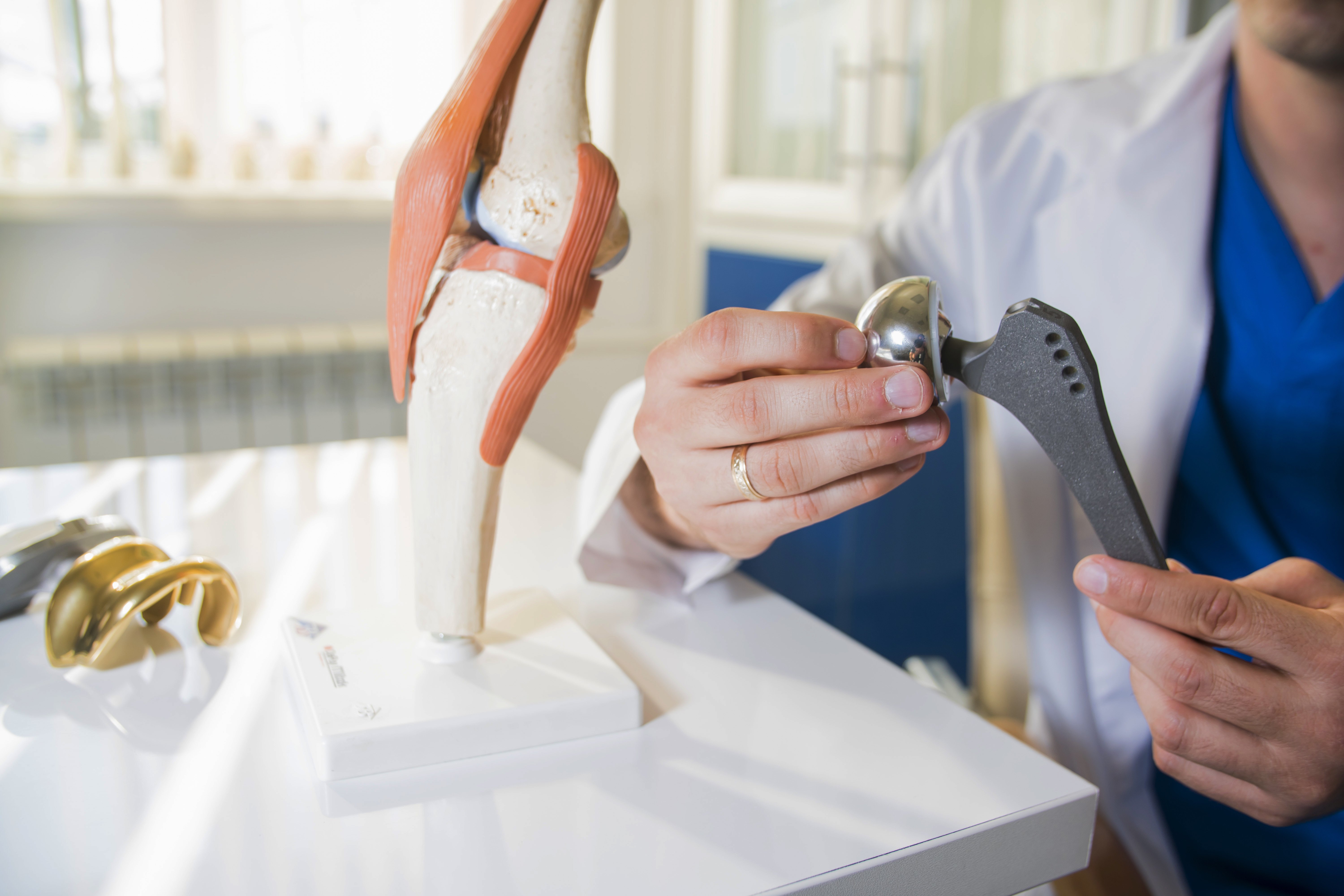REVISION HIP replacement SURGERY with Allograft
Why revise a hip replacement surgery?
 Hip replacement surgery is preformed in patients with pain degradation of the hip joint from osteoarthritis, autoimmune issues, developmental flaws, osteonecrosis, and trauma. Many people recover quickly and enjoy a quality of life that they thought was behind them, but over time the joint replacement is also subject to degenerative changes with the test of time. Hips can become unstable when the components of the hip replacement wear out and potentially cause new damage to the supporting bone of the hip and femur. Revision hip surgery replaces worn artificial hip parts and damaged bone with new metal, plastic or ceramic components, and damaged bone in replaced with allograft tissue.
Hip replacement surgery is preformed in patients with pain degradation of the hip joint from osteoarthritis, autoimmune issues, developmental flaws, osteonecrosis, and trauma. Many people recover quickly and enjoy a quality of life that they thought was behind them, but over time the joint replacement is also subject to degenerative changes with the test of time. Hips can become unstable when the components of the hip replacement wear out and potentially cause new damage to the supporting bone of the hip and femur. Revision hip surgery replaces worn artificial hip parts and damaged bone with new metal, plastic or ceramic components, and damaged bone in replaced with allograft tissue.
When to consider a hip revision surgery with allograft
When a hip replacement is no longer functioning properly the parts can cause painful damage to the hip. If you are experiencing new hip pain after a total hip replacement, speaking with your orthopedic hip surgeon for evaluation would be recommended. The artificial joint can be damaged with dislocation of the artificial hip, the joint can feel loose and unstable, and the bone can become weakened and even infected causing pain and fever. As artificial parts from a total hip replacement wear out the structural debris residues that are released damage the bone in the area by inhibiting both growth and increasing fluid retention. These conditions cause the localized bone to effectively dissolve to a degree over time. When a hip replacement is ready for replacement the socket may have become compromised and require structural repair. The structural repair of an acetabular socket is going to involve donor bone tissue, called allograft, and mesh.
Hip revision surgery with allograft
A hip revision surgery is going to be very similar from the patient’s perspective of the initial joint replacement in terms of preparation and recovery. Getting weight, blood sugar, and heart health under control is going to be needed as well as the cessation of smoking for a month before the procedure. The patient will undergo anesthesia for the procedure and will need to be in appropriate health. The surgeon will remove the old hardware from the joint and clean and repair the bones as needed. Allograft and mesh may be utilized to build up enough bone to seat the joint in the hip, and bone cement may be used in the femoral body if a press fit is unable to be achieved with the replacement hardware. A successful hip revision surgery is going to bring stability back to the joint and reduce or eliminate the hip pain for the patient. Recovery is going to be like the initial hip replacement in duration and will require physical therapy and lifestyle modification to strengthen the joint and protect from dislocation.
Considering Hip revision surgery with allograft? Meet our North Texas Orthopedic Hip team! 817-375-5200

